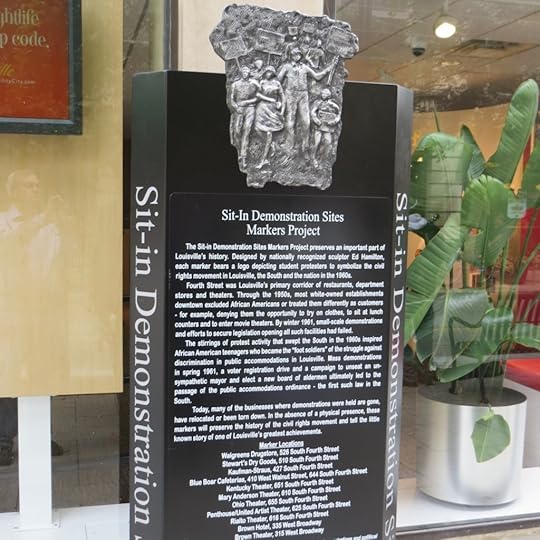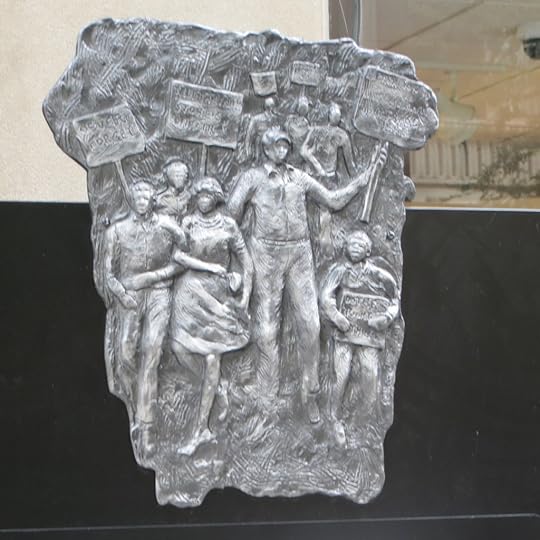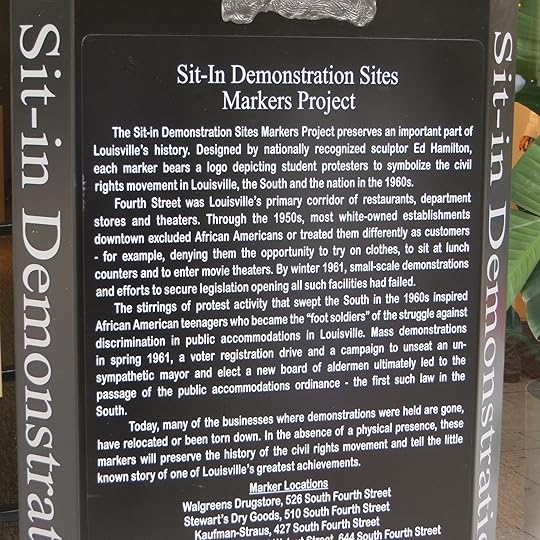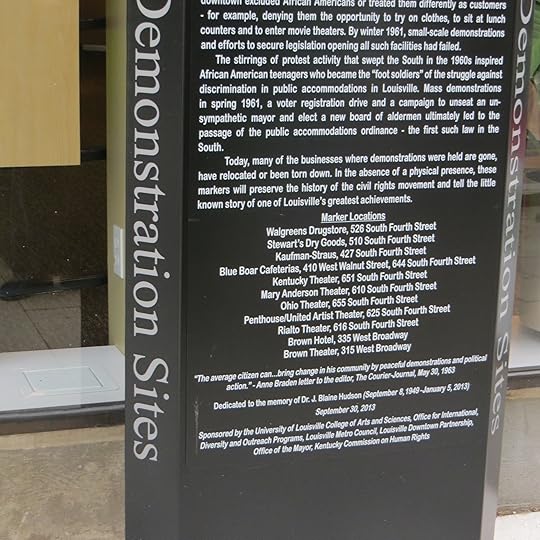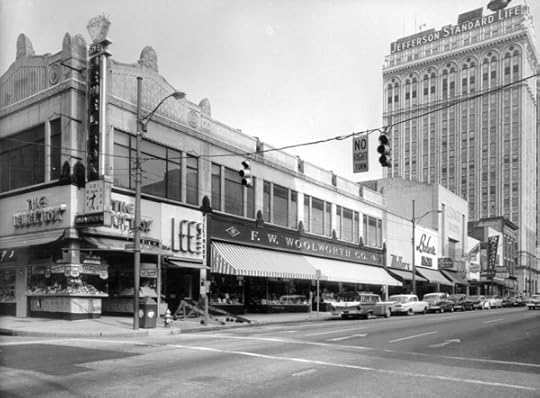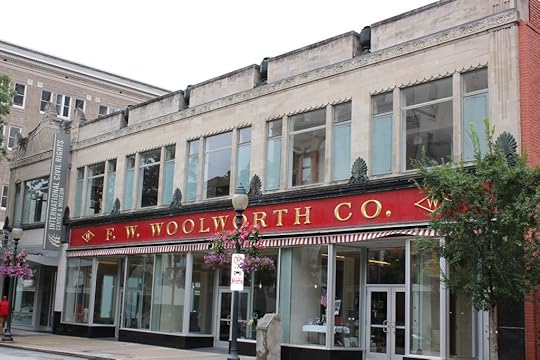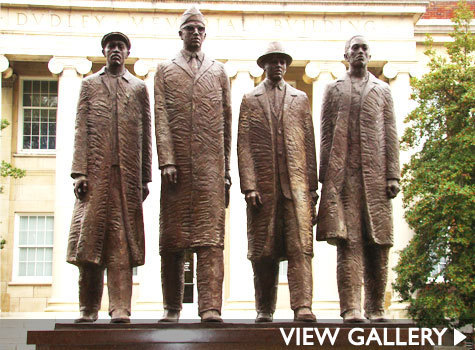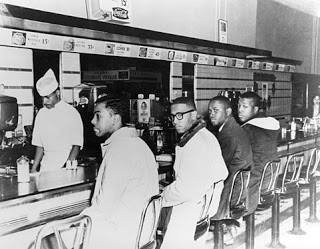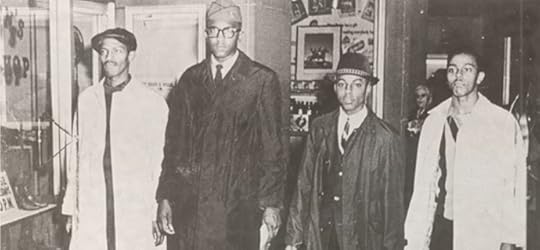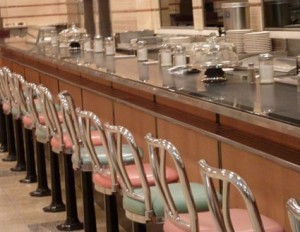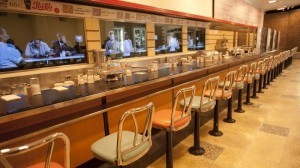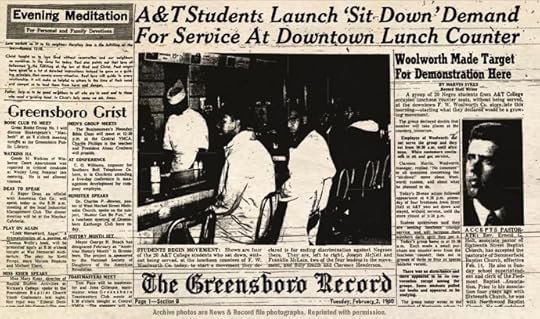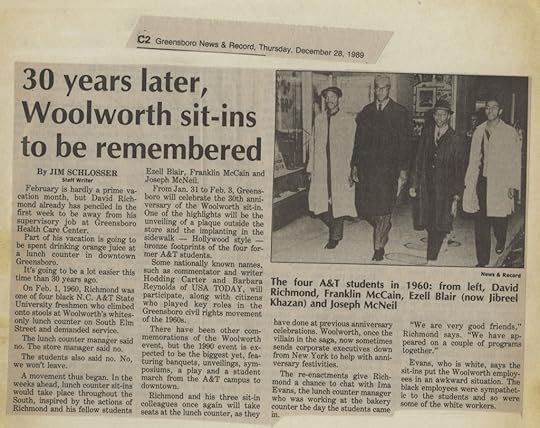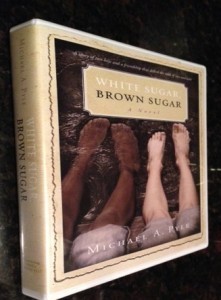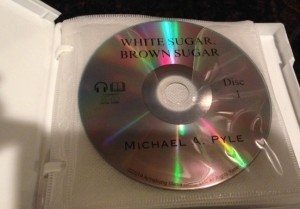Michael A. Pyle's Blog, page 173
September 16, 2014
SIt-Ins for Civil Rights in the U.S. – Early 60′s
I have learned much more about sit-ins for civil rights int he U.S. in the early 60′s. I learned that the Greensboro Four were named, not because they were courageous, or because the press followed them, but because they were the first to take the initiative, and they were relentless. I also learned that it was not a one day event. It was continuing. And eventually a great number of college students, high school students, white customers, and others joined in.
I was looking for a complete time line and more photos. I thought I would have to develop such a document myself, but as I was doing so, I found the following web site.
Article:
http://www.crmvet.org/tim/timhis60.htm#1960sitins
Images:
http://www.crmvet.org/images/imgcoll.htm
This site, Veterans of the Civil Rights Movement, begins with the Greensboro Four at the Woolworths, which is not the International Civil Rights Museum in Greensboro, North Carolina, and moves through many southern states as the sit-ins and demonstrations spread. I’ve seen a lot of the photos before, but this web site provides locations and dates, all in one place. There are a number of pages, so be sure to pass through it all.
Here’s a sample from the first page:
“The The Sit-Ins — Off Campus and Into Movement
Greensboro, NC. February 1st, 1960
![[© Greensboro News photo]](https://i.gr-assets.com/images/S/compressed.photo.goodreads.com/hostedimages/1411097673i/11193200.jpg)
I’m going to sit at the welcome table…
![[photographer unknown]](https://i.gr-assets.com/images/S/compressed.photo.goodreads.com/hostedimages/1411097673i/11193201.jpg) February 1st, 1960, Greensboro NC. Four students from North Carolina A&T sit down at a “whites-only” Woolworth’s lunch counter and ask to be served. This action by David Richmond, Franklin McCain, Ezell Blair, and Joseph McNeil ignites a wave of student sit-ins and protests that flash like fire across the South. A fire for justice that no amount of beatings, jails, or firehoses, can extinguish. Within days sit-ins are occurring in dozens of Southern towns, and in the North supporting picket-lines spring up at Woolworth and Kress stores from New York to San Francisco.
February 1st, 1960, Greensboro NC. Four students from North Carolina A&T sit down at a “whites-only” Woolworth’s lunch counter and ask to be served. This action by David Richmond, Franklin McCain, Ezell Blair, and Joseph McNeil ignites a wave of student sit-ins and protests that flash like fire across the South. A fire for justice that no amount of beatings, jails, or firehoses, can extinguish. Within days sit-ins are occurring in dozens of Southern towns, and in the North supporting picket-lines spring up at Woolworth and Kress stores from New York to San Francisco.![[© News & Record photo]](https://i.gr-assets.com/images/S/compressed.photo.goodreads.com/hostedimages/1411097673i/11193202.jpg)
Protests continue outside the segregated Mayfair Cafeteria, Greensboro, 1960.”
also has links to many of the Freedom Rider sights and information:
http://www.crmvet.org/riders/frhome.htm
There is an enormous wealth of information about this vitally important historical movement on this site, and the links within the site.
Civil Rights Movement Sit-Ins – Louisville, Kentucky Commemoration
I previously thought I knew something about sit-ins for civil rights, but now I realize I did not know enough. How ironic that I would be in Greensboro where the sit-in technique for the fight for civil rights for Blacks in the south of the U.S. really began, and would visit a museum where so many things would become clearer in my mind. And then I would come to understand that all the sit-ins that occurred in the early sixties actually came from that brave initiative.
I arrived in Louisville, Kentucky the day I left Greensboro. I asked if there were any civil rights museums here, and was told no. I went looking for a restaurant a block from my hotel, and found 4th Street, which is a street closed to traffic for several blocks, for nightlife, eating and drinking. As soon as I turned the corner from Jefferson onto 4th Street, I saw this marker, which speaks for itself:
Close-up:
Close-up of Text:
I found a web-site on line that explains the Louisville concept:
http://louisville.edu/artsandsciences/idop/outreach-programs/civil-rights-markers-project
The text says:
“Downtown Civil Rights Movement Markers Project
The Downtown Civil Rights Movement Markers Project was the vision of J. Blaine Hudson, former dean of the University of Louisville College of Arts and Sciences. Dean Hudson’s vision was to preserve the history, heritage and contributions of African Americans to Louisville’s rich history. Fourth Street was Louisville’s primary corridor of restaurants, department stores and theaters. Through the 1950s, most white-owned establishments downtown excluded African Americans or treated them differently as customers—for example, denying them the opportunity to try on clothes, to sit at lunch counters and to enter movie theaters. By winter 1961, small-scale demonstrations and efforts to secure legislation opening all such facilities had failed. The stirrings of protest activity that swept the South in the 1960s inspired African American teenagers who became the “foot soldiers” of the struggle against discrimination in public accommodations in Louisville. Mass student demonstrations in spring 1961, a voter registration drive and a campaign to unseat an unsympathetic mayor and elect a new board of aldermen ultimately led to the passage of the public accommodations ordinance – the first such law in the South. Today, many businesses that were picketed in the demonstrations have closed, relocated or been torn down. In the absence of a physical presence, these markers will preserve the history of the civil rights movement and tell the little-known story of one of Louisville’s greatest achievements.
Fourth Street Demonstration
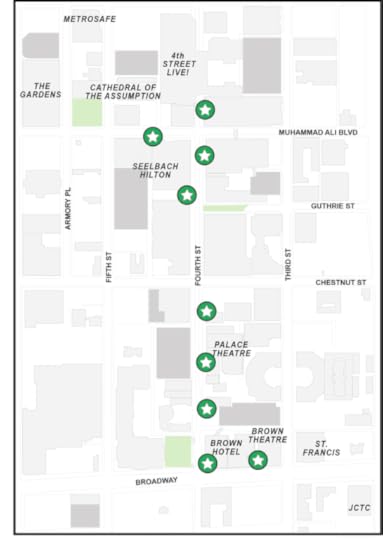
Marker Sites
Walgreen Drugstore, 526 South Fourth Street
Stewarts Department Store, 510 South Fourth Street
Kaufman Straus Department Store, 427 South Fourth Street
Blue Boar Cafeteria , 410 W. Walnut Street
Kentucky Theater/ Ohio Theater, 651 South Fourth Street
Mary Anderson Theater/Rialto Theater, 610 South Fourth
Penthouse/United Artist Theater, 625 South Fourth Street
Brown Hotel, 335 W. Broadway
Brown Theater, 315 W. Broadway
Introductory Panel, TBD”
Our thanks to the marker sponsors, Office of the Dean, College of Arts and Sciences, Louisville Metro Council, Office of the Mayor, LG&E/KU, The Owsley Brown Charitable Trust, The Louisville( KY) Chapter of the Links Inc., Alpha Phi Alpha Fraternity, Inc., Alpha Lambda Chapter,, The Courier Journal, Pan African Studies Department, Commonwealth Center for the Humanities, Kentucky Commission on Human Rights, Louisville Downtown Partnership.
Advisory Committee
Mervin Aubespin, Co-Author Two Centuries of Black Louisville
Lindy Casebier, Deputy Secretary Tourism, Arts & Heritage Cabinet
Raoul Cunningham, President Louisville Branch, NAACP
Rebecca Matheny, Interim Director Louisville Downtown Partnership
Dr. Catherine (Cate) Fosl, Associate Professor Anne Braden Institute for Social Justice
Darnell Farris Louisville Metro Urban Design Services
Richard Jett, Retired Louisville Metro Planning & Design
Dr. Tracy K’Meyer, Chairperson Department of History
Carolyn Miller-Cooper, Executive Director Human Relations Commission
Deanna Tinsley Civil Rights Demonstrator
Clark Welch, Louisville Downtown Partnership
Rita Phillips, Executive Director Kentucky Center for African American Heritage
Dr. Teresa Rajack-Talley Pan African Studies
Nefertiti Burton, Associate Dean, College of Arts & Sciences
Clest Lanier, Project Coordinator, IDOP College of Arts & Sciences
Dr. J. Blaine Hudson, Chair, Former Dean, College of Arts & Sciences”
September 13, 2014
Greensboro, NC Racial History – Greensboro Four at Woolworths 1960
I was in Greensboro, North Carolina for a wedding. The bride and groom had listed the International Civil Rights Museum on the suggestion list.
I had an interesting history flashback just talking about going. I stopped in the Greensboro Visitors Bureau and asked about it. An elderly white man working at the Bureau told me about it, and encouraged me to attend. His white female counterpart said, “Don’t bother going to that museum. Our own historical museum is much better and it’s free.” The man answered, “He said he’s interested in Civil Rights.” She answered, “Our museum has civil rights too.” I had the impression that she never accepted the end to segregation.
I’m glad I didn’t listen. Well, I would never listen to talk like that. I went to the International Civil Rights Museum on S. Elm Street in Greensboro. You must take a one-hour tour. It was excellent. They display very graphic and telling photos, many of which I have seen before, but many I had not. They had reenactments of the students planning the sit-in in their dorms, reenactments of the sit-in, real videos of many shocking and disturbing acts, many artifacts, etc.
The outside of the museum still has the original Woolworths sign, because the building is exactly the same building in the same place as this occurred. The lunch counter is unchanged. It has most of the original chairs, floor, walls, menu items, sugar dispensers, plates, etc.
They did not permit photographs inside, so I had to be creative in finding photographs of some things I saw but couldn’t take myself.
Greensboro Woolworths:
Apparently the very first of the many sit-ins at Woolworths and throughout the south began here.:
Greensboro Four:
Sit-ins began in many Woolworths and other dining establishments throughout the south as the result of this. Often they occurred in towns where there was one or more black college. Daytona Beach is shown as one.
I’ll post another post with additional sit-ins and other activities.
August 20, 2014
New Downloadable Audio Version of White Sugar, Brown Sugar available.
White Sugar, Brown Sugar is now available both as audio CDs and as downloadable media. Tonight, it was posted by Amazon and on Audible, and will be on ITunes within a few days.
Free with Audible trial
$0.00
$0.00 Start your free trial
Includes two free audiobooks
Choose from 150,000+ titles
After 30 days, Audible is $14.95/mo.
Cancel anytime
Buy with 1-Click
$21.83

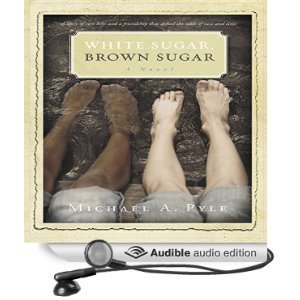
Listen: Play Sample
White Sugar, Brown Sugar [Unabridged] [Audible Audio Edition]
by Michael A. Pyle (Author, Narrator)
Be the first to review this item
Listen on your Kindle Fire or with the free Audible app on Apple, Android, and Windows devices.
Interview of Mike Pyle on Book Marc
Marc Bernier interviewed me about White Sugar, Brown Sugar for his new Book Marc – Radio for Readers. It’s my first time on YouTube!
White Sugar, Brown Sugar by Michael A. Pyle - YouTube
[image error]
July 12, 2014
Ode to the Book – A Wonderful Poem by Pablo Neruda, Translated
Ode to the Book
When I close a book
I open life.
I hear
faltering cries
among harbours.
Copper ignots
slide down sand-pits
to Tocopilla.
Night time.
Among the islands
our ocean
throbs with fish,
touches the feet, the thighs,
the chalk ribs
of my country.
The whole of night
clings to its shores, by dawn
it wakes up singing
as if it had excited a guitar.
The ocean’s surge is calling.
The wind
calls me
and Rodriguez calls,
and Jose Antonio–
I got a telegram
from the “Mine” Union
and the one I love
(whose name I won’t let out)
expects me in Bucalemu.
No book has been able
to wrap me in paper,
to fill me up
with typography,
with heavenly imprints
or was ever able
to bind my eyes,
I come out of books to people orchards
with the hoarse family of my song,
to work the burning metals
or to eat smoked beef
by mountain firesides.
I love adventurous
books,
books of forest or snow,
depth or sky
but hate
the spider book
in which thought
has laid poisonous wires
to trap the juvenile
and circling fly.
Book, let me go.
I won’t go clothed
in volumes,
I don’t come out
of collected works,
my poems
have not eaten poems–
they devour
exciting happenings,
feed on rough weather,
and dig their food
out of earth and men.
I’m on my way
with dust in my shoes
free of mythology:
send books back to their shelves,
I’m going down into the streets.
I learned about life
from life itself,
love I learned in a single kiss
and could teach no one anything
except that I have lived
with something in common among men,
when fighting with them,
when saying all their say in my song.
Pablo Neruda
Visit for exquisite audio reading.
July 7, 2014
Google Exec says Cuban Internet is Old and Censored – Miami Herald
It’s interesting, in a week in which Charlie Christ has indicated the Embargo should be eliminated, that this man says the same thing. Of course, the Cuban government might not be so eager to allow electronics into the country even without the Embargo, as the result of the recent scandal of the U.S. government’s fake Twitter fiasco.
According to the article, he also states that, “Information is passed hand to hand in USB flash drives and other digital memories in “a type of sneakernet,” … and youths have been assembling mesh networks of Wi-Fi routers for file sharing and private messaging.” Even famous blogger Yoani Sanchez recently stated that she intends to make her materials more available on the island by using such techniques.
We know plenty of people in Cuba, and we know the way this man describes Cuban Internet is quite accurate.
[image error]

May 19, 2014
White Sugar, Brown Sugar Audio Book is Available
At long last, the audio version of White Sugar, Brown Sugar is published. In the next week, there will be a new link on the www.mikepylewriter.com website to order it. The price is $19.25 plus sales tax, plus postage.
If anybody wants it prior to the link appearing, contact me by e-mail at mikepylewriter@gmail.com.
In another few weeks, I expect it also to be available on Audible, Amazon and iTunes. Since it’s a different format, I still have to proof that version again before uploading.
[image error]

Presentation at Dan Pels’ Poetry Show
I am very appreciative to have been asked to present at Dan Pels’ Poetry Show earlier this month. I am not a poet and have no idea how to write a poem. But Dan’s wife Jeannette had read my book and thought the poetry fans would welcome me to talk about it. I was a little nervous about it because I know poets read their poetry aloud, and I had not yet read anything from my book aloud. Honestly, I get bored listening to people read from a novel. But I managed to find some things I hoped were descriptive enough to be enjoyed by the poetry fans. It seemed that most were enthusiastic, and quite a few bought copies of my book, so it was a great success.
Also, I got to share the spotlight with poet Dan Pels himself, and poet Kevin Campbell, author of a poetry book called Sadoto, written in his pen name, NoirJente. He delivered a spirited and riveting reading of poems from his book.
The Amazon description says it’s a, “chapbook by NoirJente! Noted Central Florida poet and spoken word artist NoirJente finally brings his inimitable style to the printed page. Sadoto is a volume of poetry that explores issues of race in America. Asking novel questions not often posed in the usual discussions on what it means to be African-American, the poems serve not only as an overview of the present state, but as a clarion call to begin anew the unfinished work remaining.”
That is a very apt description of the work itself.
Dan Pels presents at all his shows with a number of light, comical (sometimes spattered with French, which you don’t need to understand to enjoy) poems. His poetry is described on Amazon as being “…built on the French surrealist tradition–with a unique voice of his own–he imagines us a new world in his poetry.”
Also, between the three readings of poetry, by the three presenters each time, marvelous singer Lorale kept the feeling flowing.
The place was packed with poets, would-be poets, wine enthusiasts, and people who just like a good time. But they all listened when it was time to do so. I loved it.
If you like poetry, or even if you don’t, check it out. It’s open to general public, free, held the first Wednesday of each month (although I’m not sure if and when there’s a hiatus) at Peter’s Wine Shop, located at 1655 Dunlawton Avenue, Port Orange.
[image error]

May 17, 2014
Brown vs. Board of Education Decided 60 years ago today
It is also important to recognize the unbelievably dedicated lawyer, Thurgood Marshall, who long before winning this case traveled the country, against great defiance and danger, defending Black men accused of crimes, (Read “Devil in the Grove, Thurgood Marshall, the Groveland Boys, and the Dawn of a New America”, by my good friend, Gilbert King for an excellent history), and then participated in many successful Civil Rights Cases before the Supreme Court, which set “precedents for chipping away Jim Crow laws in higher education, Marshall succeeded in having the Supreme Court declare segregated public schools unconstitutional in Brown v. Board of Education. And then, of course, he ultimately became one of the most stalwart defenders of all that is wrong as a Supreme Court Justice.
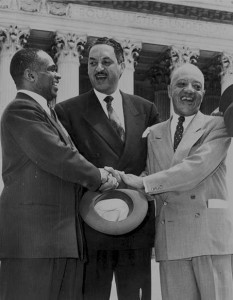
[image error]


